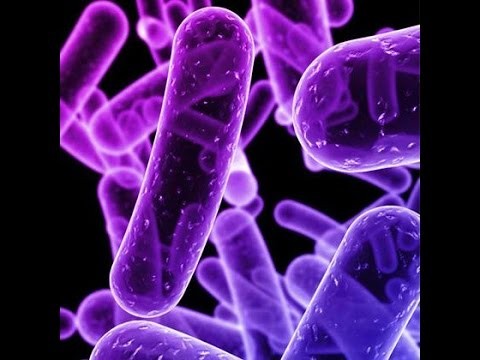By Dane Lorica, | March 04, 2017

Enterobacteriaceae is included in WHO priority list of antibiotic resistant bacteria.
World Health Organization (WHO) released names of 12 bacteria that highly threaten humans. These include Acinetobacter baumannii, Pseudomonas aeruginosa, Enterobacteriaceae, Enterococcus faecium, Staphylococcus aureus, Helicobacter pylori, Campylobacter spp., Salmonellae, Neisseria gonorrhoeae, Streptococcus pneumoniae, Haemophilus influenzae and Shigella spp.
Like Us on Facebook
Campylobacter, Salmonella and Neisseria gonorrhoeae fall under the high threat category. Campylobacter resistant to fluoroquinolone is the most common culprit of diarrhea and food poisoning. Likewise, Salmonella also causes food poisoning and has been increasing its resistance against antimicrobials.
Gonorrhea-causing microorganism is also gaining resistance against antimicrobials and if left untreated, it could lead to severe inflammation on women's pelvic and men's testicles.
Streptococcus pneumoniae and Shigella are categorized as medium threat to human health. The former causes meningitis and pneumonia and is now resistant to penicillin. Meanwhile, the latter is found in the intestine resulting to diarrhea and has build resistance against fluoroquinolone.
WHO placed Acinetobacter baumannii on top of the critical priority as it is the main culprit of hospital-acquired infections. Most infections from health facilities are caused by gram negative bacteria like A. baumannii and Pseudomonas aeruginosa. Dr. Marie-Paule Kieny said that "these bacteria are responsible for high mortality rates."
WHO calls for the assistance of pharmaceutical companies and government agencies to help in new drug discoveries and development. The organization reported that there are roughly 700,000 mortalities due to antibiotic-resistant bacteria and the number is expected to increase to 10 million by 2050 if the problem remains unsolved.
Senior Director Allan Coukell of Pew Charitable Trust's antibiotic resistance project said that there are currently 40 antimicrobials being developed in the United States but "fewer than half even have the potential to treat the pathogens identified by WHO." Meanwhile, Helen Boucher of Tufts University said that prevention and proper use of antimicrobials are also important.
Kieny clarified that "this list is not meant to scare people about new superbugs." The list of bacteria with great threat to human health is "intended to signal research and development priorities to address urgent public health threats."
-
Use of Coronavirus Pandemic Drones Raises Privacy Concerns: Drones Spread Fear, Local Officials Say

-
Coronavirus Hampers The Delivery Of Lockheed Martin F-35 Stealth Fighters For 2020

-
Instagram Speeds Up Plans to Add Account Memorialization Feature Due to COVID-19 Deaths

-
NASA: Perseverance Plans to Bring 'Mars Rock' to Earth in 2031

-
600 Dead And 3,000 In The Hospital as Iranians Believed Drinking High-Concentrations of Alcohol Can Cure The Coronavirus

-
600 Dead And 3,000 In The Hospital as Iranians Believed Drinking High-Concentrations of Alcohol Can Cure The Coronavirus

-
COVID-19: Doctors, Nurses Use Virtual Reality to Learn New Skills in Treating Coronavirus Patients







